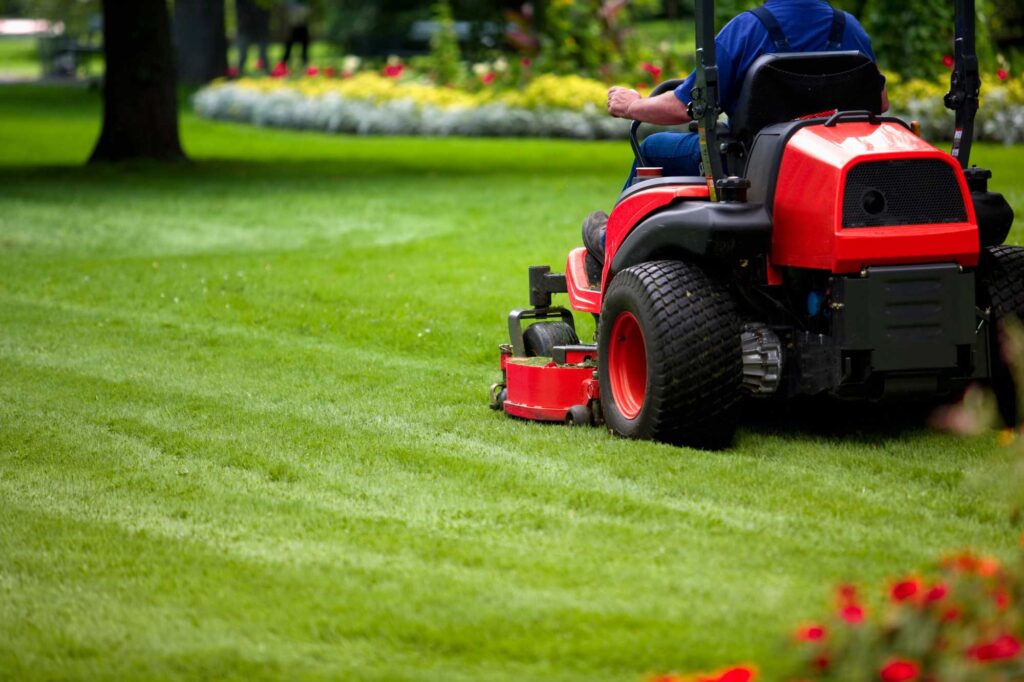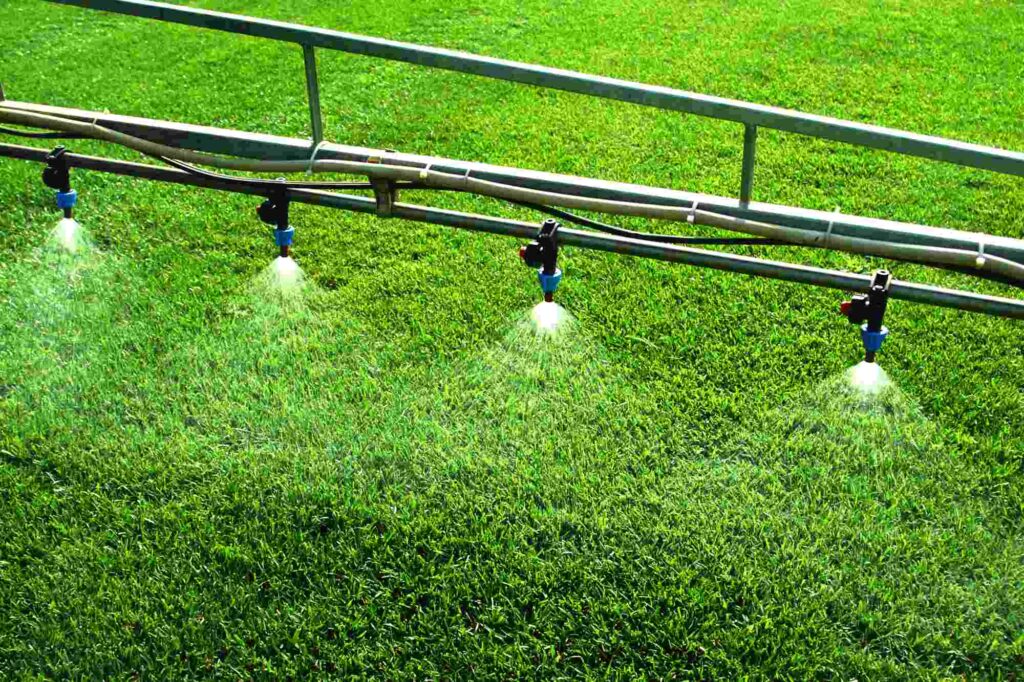In this post, we will start with the essential steps for lawn maintenance, from mowing, watering and even fertilizing along with pest control. All complement each other and are very important to achieve an enviable garden. Plus, we’ll provide tips and recommendations so you can enjoy a healthy, green lawn year-round.

What is Lawn Maintenance?
Lawn maintenance is a set of practices that are performed with the objective of keeping the lawn healthy, strong and free of weeds, pests and diseases. First impressions are always important. And if you go to a place with a garden that has a dull, unpleasant-looking lawn, what will you think of the person who tends it?
Well, indeed, not only the aesthetic and harmonious is pleasant. But also offers and brings multiple benefits to the environment or ecosystem that cohabit in that environment and health in general.
Importance of maintenance
To achieve such harmony, it is vital to apply a proper and correct maintenance plan. Because if a lawn is well maintained, it is not only aesthetically pleasing, but also offers several benefits, such as:
Improve air quality: the lawn absorbs carbon dioxide and releases oxygen, contributing to the purification of the air we breathe.
Regulating temperature: grass acts as a natural insulator, helping to maintain a cool temperature in the garden during the summer.
Prevent soil erosion: grass roots help hold the soil, preventing erosion caused by wind and water.
Reduce weed growth: a dense, healthy lawn prevents weeds from growing and competing for soil nutrients.
Increase property value: a well-manicured lawn can increase the value of your home.
Essential steps to maintain a healthy lawn
A lush, green lawn is the heart of an attractive and inviting garden. Not only does it add beauty to the outdoor space, but it also creates a cool, relaxing atmosphere, perfect for enjoying the outdoors in the company of family and friends.
1. Mowing
May also be called mowing and, the frequency of this will depend on the type of grass, the time of year and the environmental conditions that are present. In general, it is recommended to mow once a week during spring and summer and every two weeks during fall and winter.
The height of the plant when mowing will vary depending on the type of grass, but in general it is recommended to keep it between 5 and 8 cm. It is advisable to use a sharp mower with good tips to avoid damaging the blades of grass.
2. Watering
The amount of water the lawn needs will depend on the type of soil, the climate and the time of year. In general, it is best to water the lawn with enough water to reach more soil underneath, but infrequently, rather than overhead and more often.
The best time to water the lawn is very early in the morning, before the sun rises. Do not overwater, as this can lead to fungus and other diseases to your lawn and/or nearby plants.

3. Fertilization
Adding fertilizer to the lawn as part of its maintenance is of great importance as it provides the nutrients necessary for it to grow healthy and strong. It is recommended to fertilize the lawn two or three times a year, following the fertilizer manufacturer’s instructions.
Choose a good fertilizer that is suitable for the type of lawn and the existing soil conditions.
4. Weed control
Weeds compete with grass for water and nutrients, so it is important to control them to maintain a healthy lawn. There are different methods to control weeds, such as hand weeding, herbicide use or mulching.
5. Pest and disease control
Lawns can be susceptible to various pests and diseases, such as weeds, insects, and fungi. It would be good that, from time to time, you inspect or take a look (if you can’t personally, then assign someone you trust) to the lawn. To detect any sign of damage, existence of pests or disease. Because if these anomalies are detected, measures must be taken to control them immediately.
There are several methods to control lawn pests and diseases, including the use of pesticides, fungicides, and herbicides. Use them responsibly, follow the manufacturer’s instructions to the letter.
6. Aeration
Lawn aeration consists practically of perforating the soil to improve air circulation or flow and water penetration. It is advisable to do it once or twice a year, especially if the soil is compacted. Lawn aeration helps prevent problems such as fungal growth and disease.
7. Reseeding
Over time, the lawn may become thin or uneven. In these cases, some areas may need to be reseeded to restore full and even coverage to the lawn.
Additional lawn maintenance tips
Remove weeds: it is important to remove weeds from the lawn on a regular basis, as they compete with grass plants for nutrients and water.
Collect grass clippings: after mowing, it is important to collect the clippings and compost or dispose of them properly.
Repair damaged lawns: if the lawn is damaged by people or animals, it is important to repair it as soon as possible to prevent the damage from spreading.
Protect the lawn from the cold: during the winter, it is important to protect the lawn from the cold and snow by covering it with a layer of straw or a protective blanket.
Conclusion
Lawn maintenance may seem like an arduous task, but there are numerous professional companies that offer comprehensive lawn maintenance services. Hiring a professional can save you time and effort and ensure that your lawn receives the proper care to stay healthy and beautiful.
Maintaining a healthy and beautiful lawn requires dedication and knowledge, but the benefits it brings to your environment are worth it.
